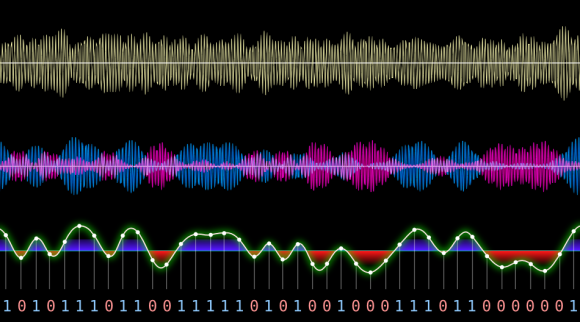A few weeks ago in Finland [Oona] discovered a radio data stream centered around 76KHz in a FM broadcast and she recently managed to decode it. This 16,000bps stream uses level-controlled minimum-shift keying (L-MSK) which detection can be quite tricky to implement. She therefore decoded the stream by treating the received signal as non-coherent binary FSK, which as a side effect increased the bit error probability. [Oona] then understood that the stream she was getting was the data broadcast by Helsinky buses to the nearby bus stop timetable displays.
She even got lucky when she observed a display stuck in the middle of its bootup sequence, displaying a version string. This revealed that the system is called IBus and made by the Swedish company Axentia. However their website didn’t provide the specs for their proprietary protocol. After many hours of sniffing and coding, [Oona] successfully implemented the five layer protocol stack in Perl and can now read the arrival times of the nearby buses from her apartment.
She even got lucky when she observed a display stuck in the middle of its bootup sequence, displaying a version string. This revealed that the system is called IBus and made by the Swedish company Axentia. However their website didn’t provide the specs for their proprietary protocol. After many hours of sniffing and coding, [Oona] successfully implemented the five layer protocol stack in Perl and can now read the arrival times of the nearby buses from her apartment.

0 comments:
Post a Comment